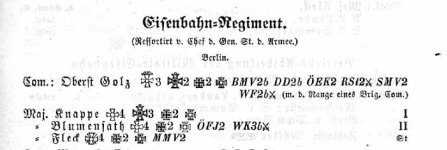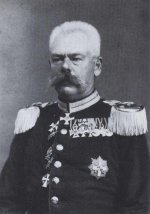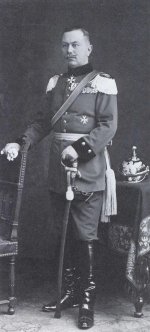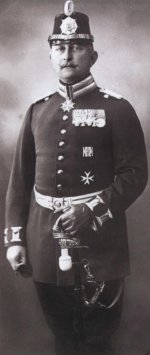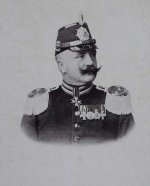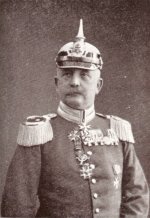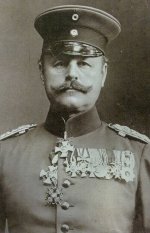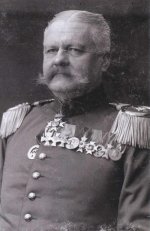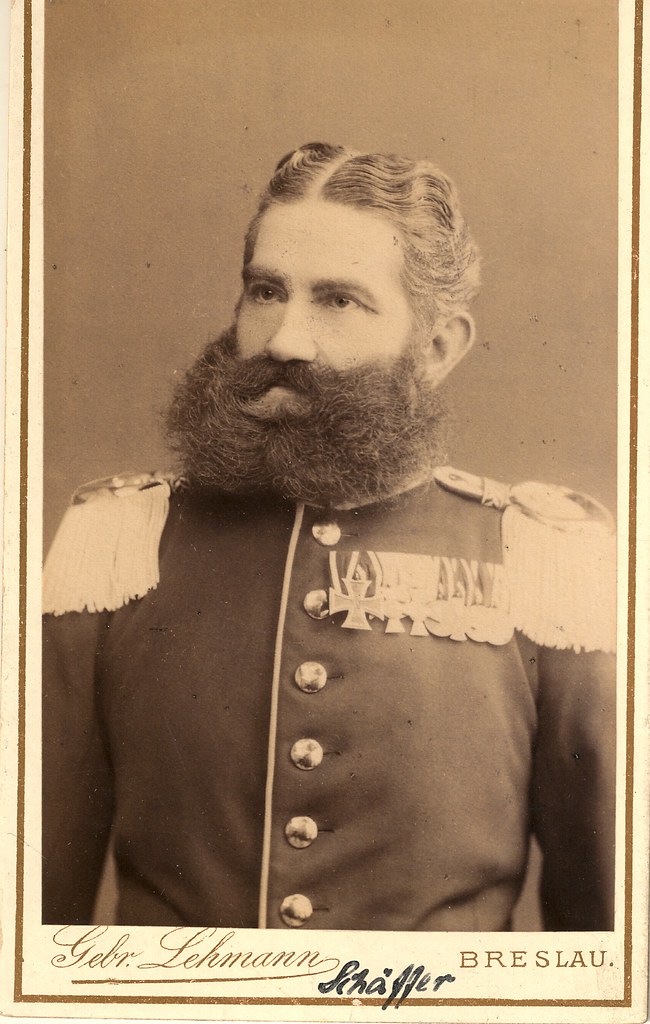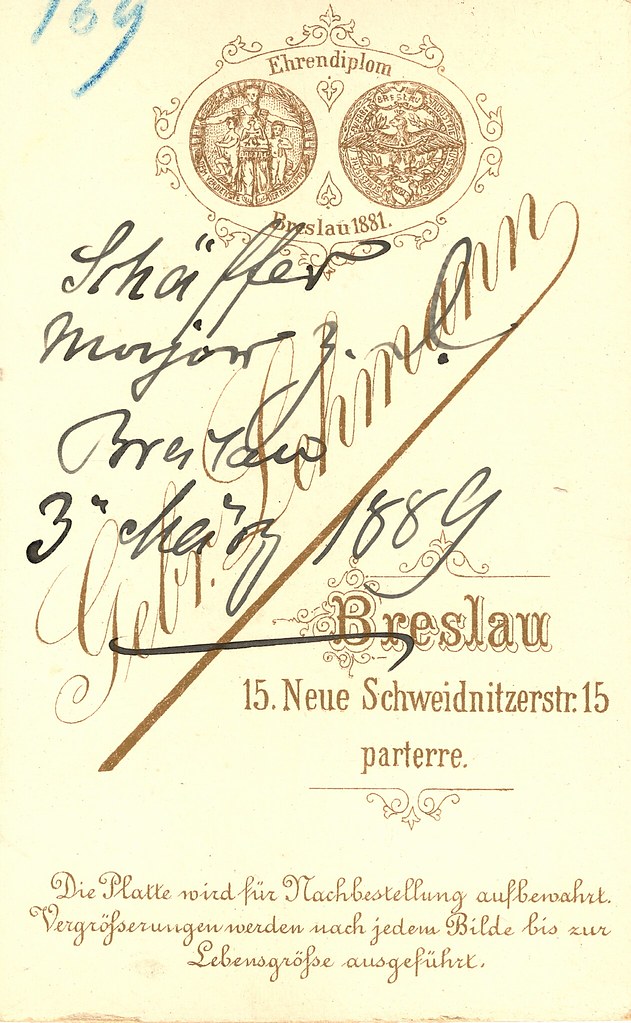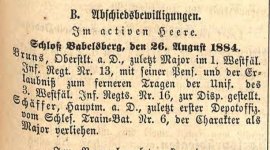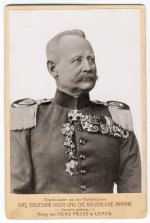I was just looking through the awfully translated “Militaria” by Kube and came across this unnamed Major of the Königin-Augusta-Garde-Grenadier-Regiment Nr. 4 “around 1900.” Having identified him, I thought it might be of some interest to describe an example of how one can go about identifying an unnamed subject from an old photograph. This of course is not infallible and presupposes one has access to the necessary army lists and a decent understanding of the uniforms and decorations in question. Also if the subject has a “bog-standard” set of decorations, then it will only be possible to narrow him down to a list of “suspects.”
Well, the uniform for GGR4 appears to check out, so how about determining time frame? What does his medal bar tell us? Clue number1; he is wearing the centenary medal so the photograph must date after 1897. We know the photograph is pre-war as he is wearing no wartime decorations so that leaves us a preliminary time frame of 1897-1914. “Gut feeling” tells me it was probably early 1900s. Next: his decorations:
Red Eagle 4th Class
Officers’ Long Service Decoration
Kaiser Wilhelm Centenary Medal
Baden Order of the Lion of Zähringen with Oakleaves Knight's Cross
Norwegian Saint Olaf Knight's Cross
and the clincher at his throat:
A Commander's Cross of the Siamese Order of the Crown. This all ties in very nicely with his entry in 1904 Prussian Army List (the Centenary medal was never listed).
Major Nicolaus v. Below, later commander of the Non Commissioned Officers' School at Treptow, Infanterie-Regiment Nr. 95 and finally 5. Garde-Infanterie-Brigade. Generalmajor v. Below died at Frankfurt am Main on 30 July 1915 aged 59.
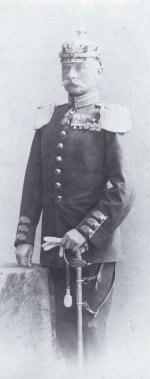
Well, the uniform for GGR4 appears to check out, so how about determining time frame? What does his medal bar tell us? Clue number1; he is wearing the centenary medal so the photograph must date after 1897. We know the photograph is pre-war as he is wearing no wartime decorations so that leaves us a preliminary time frame of 1897-1914. “Gut feeling” tells me it was probably early 1900s. Next: his decorations:
Red Eagle 4th Class
Officers’ Long Service Decoration
Kaiser Wilhelm Centenary Medal
Baden Order of the Lion of Zähringen with Oakleaves Knight's Cross
Norwegian Saint Olaf Knight's Cross
and the clincher at his throat:
A Commander's Cross of the Siamese Order of the Crown. This all ties in very nicely with his entry in 1904 Prussian Army List (the Centenary medal was never listed).
Major Nicolaus v. Below, later commander of the Non Commissioned Officers' School at Treptow, Infanterie-Regiment Nr. 95 and finally 5. Garde-Infanterie-Brigade. Generalmajor v. Below died at Frankfurt am Main on 30 July 1915 aged 59.

Last edited:

